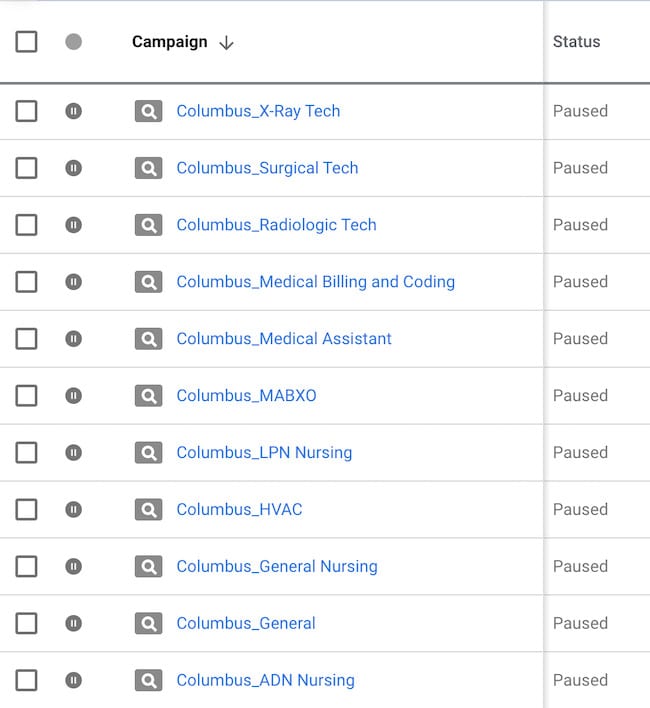Paving Our Way Towards Automated Bidding

Google has made it clear that automation is in our future and that it is better to learn how to utilize these tools now and learn how to use them in our accounts. I am going to describe how one of our accounts had tried automation several times before, but we never saw long-lasting results. Our team decided to brainstorm that we were moving towards a world where manual bidding was no longer an option, what would we be able to do to make this account successful in this new situation? What we concluded was that our current account structure might be performing great with manual bids, but maybe this structure was holding us back when it came to automation.
Early Attempts of Automation on our part
Before we can up with the radical idea to restructure our account to see if that would allow Google’s algorisms to track behavior and make changes, we test bid strategies within our original structure. We would use experiments to split the traffic 50%, and initially, we saw some lift the first few weeks, and then performance would fall back again.

Our next thought was that maybe splitting the traffic was not allowing the system to learn so we moved on to our next test, Portfolio Bidding. This idea felt promising because we could group similar campaigns together and have Google learn from multiple campaigns at once and make the changes Google needed to reach out goals. This too showed great results in the first 30 days and then the results went back to what we were seeing in our manual efforts.

Radical Changes
As much as our team wants to take credit for being brilliant with our manual bidding strategies beating Google in our early automated bidding tests, we knew that Google was working more and more towards automation. With the flurry of updates such as close variants on exact and phrase match keywords and the Recommendations Tab suggesting us to test automation and to remove keywords which the platform now finds redundant. We knew that we would have to make automation work for us before we found ourselves in a situation where automation was the only option and we made the active decision to not adapt. We have seen success for other clients, such as this case study “PPC Bid Strategies Increases Conversions by 159%” and we wanted this for this particular client as well.
We literally had a round table discussion to figure out why we weren’t seeing success with automation even with all of the tools Google has given us to make it successful. For this specific client, they are in the educational vertical and have several campuses in the United States with different trade school programs offered. This was the list we came up with on why their current account structure was limiting automation:
- Certain campaigns do not have enough conversion volume for Google to learn
- Campaigns on small daily budgets limit impression share and click possibilities
- Budgets are set by location and using the Shared Budgets options prevents most automation bidding strategies.
The next step was to find a way to consolidate our campaigns into fewer campaigns to allow Google more traffic to learn. Our previous structure was split up by the location the campaign targeted plus the program offered at that location. Below is an example of one location and the amount of campaigns we had for one campus:

We looked at the themes of the programs and consolidated all Nursing programs into one campaign and all Skilled Trades such as Medical Assistant and Radiologic Tech into Health campaigns. These programs also had a similar cost per clicks and cost per conversions which will help with automated bidding.

This new structure has eased budgeting issues as well, because we are not splitting daily budgets between 11 campaigns, but now only 3. We have grouped similar behaving campaigns together and we are currently testing Maximize conversions to help our client reach their aggressive lead goals. We are still in the early stages of testing this campaign consolidation with automated bidding, but if automation isn’t working in your accounts try and think of what steps you should take to allow automation a fighting opportunity to succeed for you.



